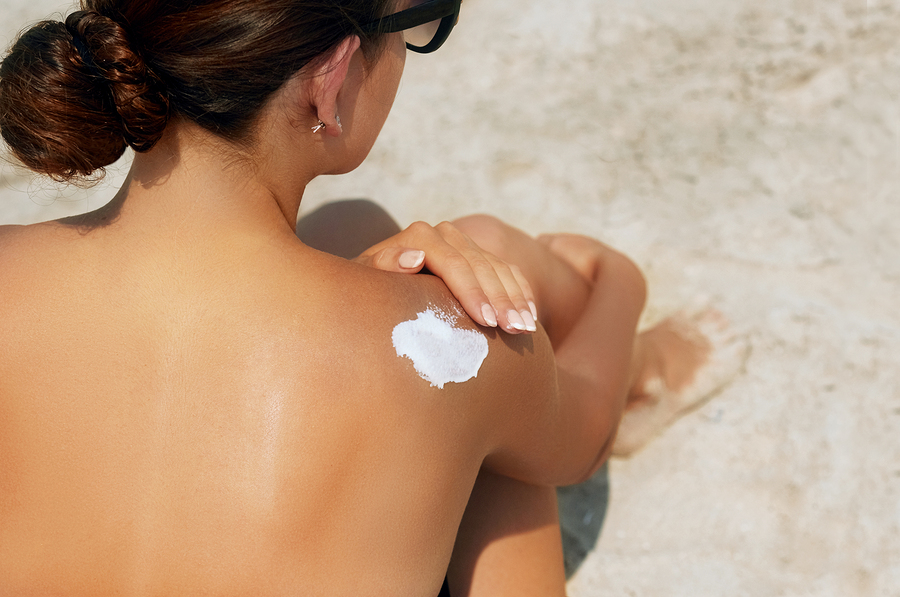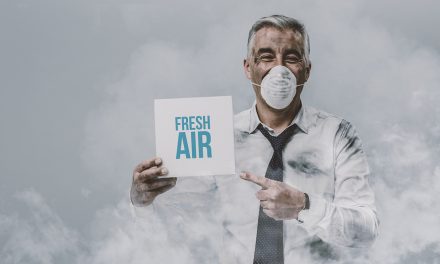According to a new study by the Center for Drug Evaluation and Research, an arm of the FDA, it took just one day of use for several common sunscreen ingredients to enter the bloodstream at levels high enough to trigger a government safety investigation. The study also found that the blood concentration of three of the ingredients continued to rise as daily use continued and remained in the body for at least 24 hours after use ended. The chemicals studied were avobenzone, oxybenzone, ecamsule, and octocrylene. The FDA has decided they need to be researched more before they can be considered GRAS/E (generally regarded as safe and effective).
RELATED STORY:
The study was published Monday in the medical journal JAMA.
But before you stop using those dangerous chemicals that your body absorbs and keeps- don’t. Yale School of Medicine dermatologist Dr. David Leffell, a spokesman for the American Academy of Dermatology wants you to continue to be “aggressive about sun protection.”1 (There are better ways to do that than with traditional sunscreen.) After all he says, “Studies need to be performed to evaluate this finding and determine whether there are true medical implications to absorption of certain ingredients.”1
RELATED STORY:
The sun is not the enemy. In fact, we need the sun to make Vitamin D which is crucial to good health. No, the bigger issue is that originally, sunscreens were approved as a solution to sunburn and came in two formulations: one that used chemicals to filter the sun and the other used minerals like titanium dioxide or zinc oxide (those leave that white coating on the skin). Even though more and more people chose the chemical formula it wasn’t that big of a deal because they were only using them while on vacation, essentially. However, with the new recommendations to cover ourselves in sunblock on a daily basis, the FDA has started to raise concerns.
RELATED STORY:
According to the Skin Cancer Foundation, more Americans are diagnosed with skin cancer each year than all other cancers combined and the World Cancer Research Fund says that melanoma ranks as the 19th most common cancer in both men and women, the world over.
“The new FDA study enrolled 24 healthy volunteers who were randomly assigned to a spray or lotion sunscreen that contained avobenzone, oxybenzone or octocrylene as ingredients or a crème sunscreen that contained the chemical ecamsule.
The volunteers were asked to put their assigned sunscreen on 75% of their bodies four times each day for four days. Thirty blood samples were taken from each volunteer over seven days.
Of the six people using the ecamsule cream, five had levels of the chemical in their blood considered statistically significant by the end of day one. For the other three chemicals, especially oxybenzone, all of the volunteers showed significant levels after the first day.”1
(Oxybenzone was absorbed into the body at about 50 to 100 times higher concentration than any of the other three chemicals tested.)
“In 2008, the US Centers for Disease Control and Prevention analyzed urine samples collected by a government study and found oxybenzone in 97% of the samples. Since then, studies have shown a potential link between oxybenzone and lower testosterone levels in adolescent boys, hormone changes in men, and shorter pregnancies and disrupted birth weights in babies, but researchers caution about assuming association.
Of all of the sunscreen ingredients, oxybenzone is known to be the most common cause of contact allergies; a 10-year study found that 70% of people had a positive patch test when exposed. A Swiss study found oxybenzone or one of four other sunscreen chemicals in 85% of breast milk samples, sparking concern that newborns could be exposed.
And Hawaii, the Pacific nation of Palau and Key West recently banned sunscreens containing oxybenzone and octinoxate because they cause coral bleaching and are dangerous to marine ecosystems.”1
A 2018 report by the EWG estimated that oxybenzone is in two-thirds of all chemically based sunscreens sold in the United States.
The American Academy of Dermatology recommends,1
- everyone apply at least 1 ounce of sunscreen to all exposed skin every two hours or after swimming, including “back, neck, face, ears, tops of your feet and legs.
- If you have thinning hair, either apply sunscreen to your scalp or wear a wide-brimmed hat.
- To protect your lips, apply a lip balm with a SPF of at least 15.
- Also, since UV rays are always present, sunscreen should be applied to exposed skin even on cloudy days and in the winter.
The EWG recommends using mineral sunscreens (those that contain titanium dioxide and zinc oxide) whenever possible while the American Academy of Dermatology recommends talking to a board-certified dermatologist if you are concerned about the safety of the sunscreen’s ingredients. (No doubt they will tell you the ingredients are safe and you shouldn’t think twice about their constant use!)
Don’t be afraid of the sun, just be smart about it. If you have to be out when the sun is at its hottest, between 10 a.m. and 2 p.m., use a mineral sunscreen and take time out to be in the shade. You can also wear protective clothing, hats with a wide brim, and sunglasses
Happy summer!
SOURCE:












